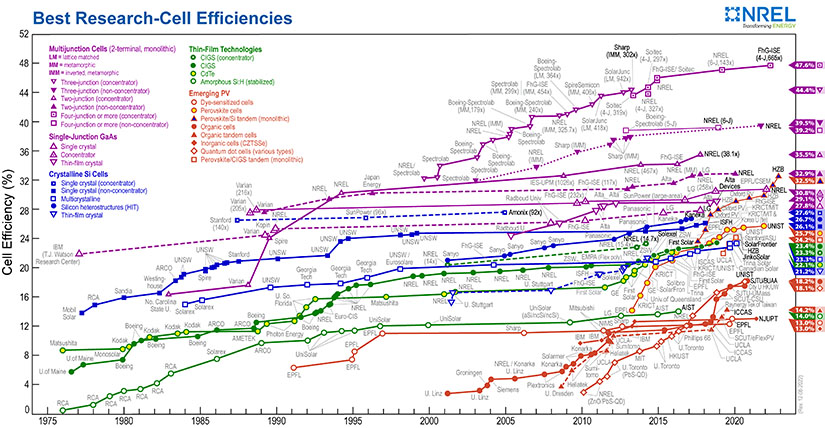SERIIUS—the Solar Energy Research Institute for India and the United States—was a five-year program initiated in 2012 and completed in 2017. SERIIUS was co-led by the Indian Institute of Science (IISc)—Bangalore, India, and the National Renewable Energy Laboratory (NREL), Golden, Colorado, USA. See the list of India and U.S partners and an illustration of the SERIIUS organizational and management structure. The remainder of this website remains intact without updating since 2017.
For a recap of the completed program, see the book Solar Energy Research Institute for India and the United States (SERIIUS): Lessons and Results from a Binational Consortium, edited by David Ginley and Kamanio Chattopadhyay.
Vision
Through an environment of cooperation and innovation "without borders," SERIIUS will develop and ready emerging and revolutionary solar electricity technologies—toward the long-term success of India's Jawaharlal Nehru National Solar Energy Mission and the U.S. Department of Energy's SunShot Initiative.
Quick Links
Goal and Objectives
SERIIUS will accelerate the development of solar electric technologies by lowering the cost per watt of photovoltaics (PV) and concentrated solar power (CSP). The six key SERIIUS objectives are the following:
- Focus efforts on high-impact fundamental and applied research and development (R&D) to create disruptive technologies in PV and CSP.
- Identify and quantify the critical technical, economic, and policy issues for solar energy development and deployment in India.
- Overcome barriers to technology transfer by teaming research institutions and industry in an effective project structure—cutting the time from discovery to technology development and commercialization, through effective coordination, communication, and intellectual property management.
- Create a new platform for bi-national collaboration using a formalized R&D project structure, along with effective management, coordination, and decision processes.
- Create a sustainable network from which to build large collaborations and foster a collaborative culture and outreach programs. This will include the use of existing and new methodologies for collaboration based on advanced electronic and Web-based communication to facilitate functional international focused teams.
- Create a strong workforce development program in solar energy science and technology.
Check the SERIIUS Web Gateway for various capabilities available through SERIIUS' central communications tool.
IISc-Bangalore Solar Thermal Project
Feb 26, 2017. "Science Monitor" is a weekly roundup of science and technology developments aired by Rajya Sabha TV. In a 4.5-minute video segment, Profs. Pradeep Dutta and Pramod Kumar explain work by their team at IISc-Bangalore on a lab-scale supercritical carbon dioxide Brayton cycle power plant.
In the News
Technology to Up Thermal Plant Efficiency to at Least 50%
Graphene-Infused Packaging is a Million Times Better at Blocking Moisture
Mapping Solar Potential in India


